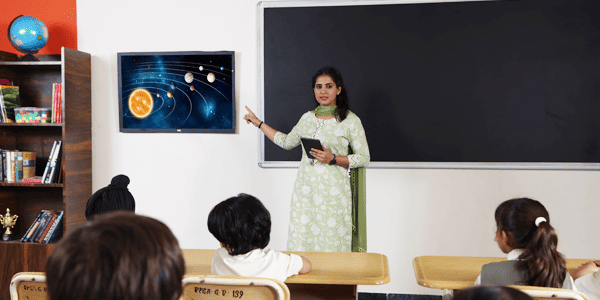Enroll in Primary Science Tuition Singapore for a Strong Science Foundation
Enroll in Primary Science Tuition Singapore for a Strong Science Foundation
Blog Article
A Comprehensive Overview to the Different Knowing Methods in Primary Scientific Research Instruction
The exploration of diverse understanding methods in primary scientific research guideline provides a chance for teachers to improve trainee interaction and comprehension considerably. By taking a look at hands-on knowing techniques, inquiry-based strategies, and collective methods, we can determine reliable techniques that cater to different discovering designs.

Hands-On Discovering Techniques
Hands-on understanding strategies play a critical function in primary science instruction, engaging pupils in active expedition and trial and error. These techniques allow students to communicate straight with materials and phenomena, fostering a much deeper understanding of clinical principles. By utilizing manipulatives, designs, and real-life experiments, teachers develop an atmosphere where students can observe, hypothesize, and examine their concepts.
Such techniques not just improve understanding however also cultivate vital thinking and analytic abilities. When pupils participate in activities like constructing basic makers, growing seeds, or performing chain reactions, they are urged to ask questions and seek solutions via their own monitorings. This experiential method helps to demystify complex scientific principles, making them a lot more accessible and relatable.
Furthermore, hands-on understanding promotes collaboration among peers, as trainees commonly function in teams to perform experiments or share findings. This teamwork not just enhances their learning experience but also creates important social abilities. Inevitably, integrating hands-on strategies in primary science direction cultivates a lifelong love of understanding and inquisitiveness concerning the environment, laying a solid structure for future scholastic searches in scientific research and past.
Inquiry-Based Knowing
Inquiry-based understanding is an instructional technique that urges trainees to ask inquiries, explore sensations, and create their own understanding of scientific concepts. This approach moves the emphasis from standard teacher-led direction to a more student-centered experience, where students take the effort in their instructional trip. By fostering inquisitiveness, inquiry-based discovering promotes deeper interaction with the product, enabling trainees to explore topics in a meaningful context.
In practice, this method often entails hands-on experiments, observations, and essential reasoning tasks that align carefully with the clinical method. Pupils are motivated to formulate hypotheses, design investigations, and assess information, which grows crucial abilities such as problem-solving and analytical thinking. The duty of the instructor in this framework is to facilitate exploration, guiding pupils via the query process while encouraging independent idea and cooperation.
Moreover, inquiry-based discovering supports a feeling of ownership over the discovering process, encouraging students to pursue understanding actively. This technique not only enhances understanding of clinical principles however also promotes a long-lasting love for understanding, outfitting students with the abilities required to browse an increasingly complex globe.
Collaborative Knowing Approaches
Collective learning approaches encourage trainees to take part in purposeful communications with peers, fostering a shared responsibility for their academic outcomes. In main scientific research guideline, these methods urge students to interact to discover clinical concepts, resolve issues, and perform experiments (primary science tuition Singapore). By participating in group tasks, pupils can leverage diverse point of views, enabling richer understanding and retention of scientific understanding
One key element of collaborative knowing is the focus on interaction abilities. Trainees need to articulate their ideas, pay attention proactively to others, and negotiate ideas, all of which are crucial competencies in both real-world and academic contexts. This social communication not only boosts their understanding of clinical concepts however also promotes teamwork and conflict resolution abilities.
Furthermore, collective learning usually leads to raised motivation and interaction. They are more most likely to take ownership of their knowing journey when pupils see the worth of their payments within a team. Educators can facilitate this process deliberately structured team jobs that line up with educational program objectives while giving advice on reliable cooperation strategies. In general, including collaborative understanding techniques in main science direction grows a dynamic knowing setting that prepares trainees for future scholastic and social obstacles.
Innovation Assimilation in Science
The combination of technology in main science direction improves learning experiences by offering cutting-edge devices and resources that sustain numerous training techniques, consisting of joint learning - primary science tuition Singapore. The use of digital platforms, simulations, and interactive applications permits pupils to engage deeply with clinical concepts, facilitating an extra hands-on technique to learning
Virtual research laboratories, for circumstances, allow students to carry out experiments safely and efficiently, promoting inquiry-based discovering. These tools can imitate real-world clinical scenarios, permitting students to envision intricate processes that would certainly be challenging to replicate in a standard classroom setting. Technology promotes communication and partnership amongst students, as they can share findings and function together on jobs through on-line platforms.
Furthermore, multimedia presentations and educational video clips can improve lessons by satisfying varied understanding designs, making abstract concepts much more obtainable. Information evaluation tools likewise encourage trainees to accumulate and analyze scientific data, strengthening vital believing abilities. On the whole, the critical consolidation of technology in main scientific research guideline not just improves engagement yet likewise prepares students for a highly innovative society, equipping them with important skills for future clinical endeavors.
Separated Instruction Strategies
Set apart guideline approaches are vital for click here for info attending to the varied needs of learners in primary scientific research education. These strategies enable teachers to tailor their mentor approaches to fit varying capacities, rate of interests, and finding out styles within the classroom. By using separated instruction, instructors can produce a comprehensive environment that cultivates interaction and improves understanding of clinical concepts.
One efficient method is to use versatile organizing, which allows trainees to team up with peers at similar ability levels or with differing viewpoints. This strategy motivates peer learning and promotes important reasoning. In addition, using choices in jobs can equip students, allowing them to pick projects that resonate with their passions while still meeting curricular purposes.
Additionally, including tiered tasks is another valuable method. By developing jobs with differing degrees of intricacy, instructors can ensure that all trainees are suitably tested, no matter of their proficiency. Utilizing developmental analyses to assess understanding additional allows educators to change their educational methods dynamically, ensuring that each learner receives the support they need.
Eventually, implementing differentiated direction strategies in main science education and learning not just improves read review student discovering results however additionally cultivates a passion for scientific research, preparing pupils for future academic pursuits.

Final Thought
In summary, effective main scientific research direction necessitates a diverse strategy that encompasses hands-on learning, inquiry-based methods, and collaborative strategies. The assimilation of technology and separated direction even more accommodates varied learning styles, fostering a setting conducive to exploration and important reasoning. By implementing these methods, instructors can boost trainee interaction and comprehension, ultimately nurturing a long-lasting interest for science and inquiry. Such extensive approaches are vital for establishing notified and interested future researchers.
The expedition of diverse understanding methods in key scientific research direction presents a possibility for educators to boost trainee engagement and understanding dramatically.Hands-on discovering strategies play an essential duty in primary science guideline, engaging students in energetic exploration and experimentation.Inquiry-based knowing is an educational method that encourages trainees to ask questions, explore phenomena, and create their very own understanding of scientific ideas.Collective knowing methods empower students to involve in purposeful communications with peers, promoting a shared responsibility for their educational look at this site end results. On the whole, integrating collective knowing approaches in key scientific research direction cultivates a vibrant discovering atmosphere that prepares students for future scholastic and social obstacles.
Report this page